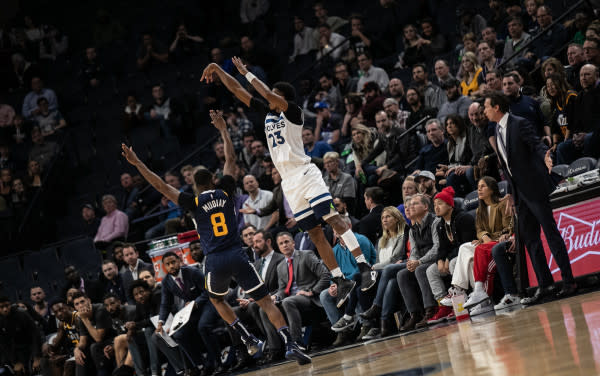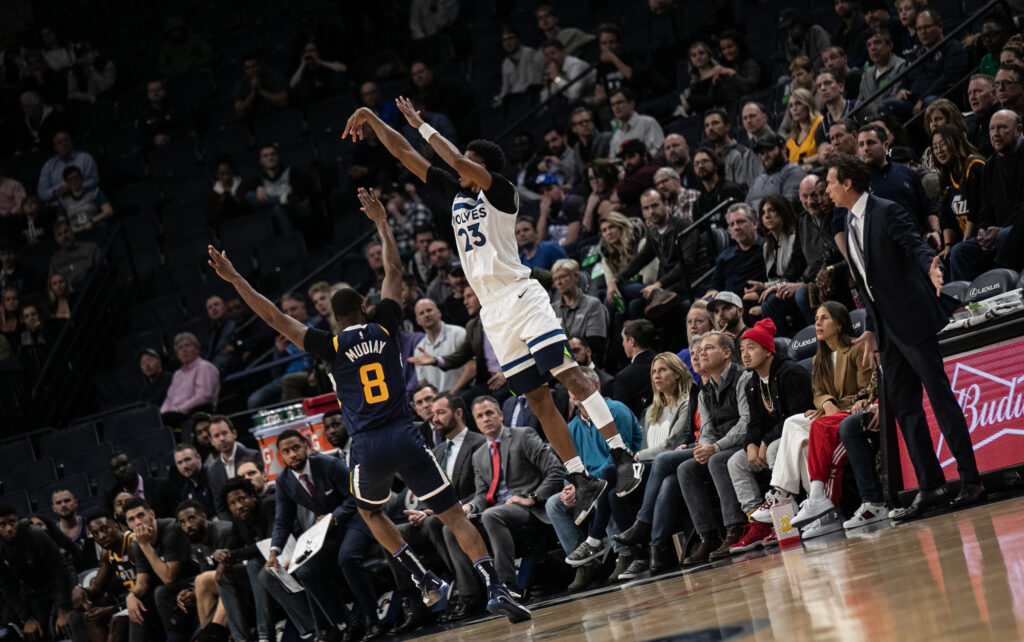
When the Minnesota Timberwolves selected Jarrett Culver with the sixth overall pick in the 2019 NBA Draft, there was plenty of intrigue surrounding the prospect from Texas Tech.
With the Wolves trading up to land Culver in the draft, the visions of a two-way player that could contribute offensively and hold his own defensively were enticing but didn’t come to fruition in his rookie season. We’re just two games into his sophomore season, but Culver appears to have improved his game and could be another piece to help the Timberwolves compete in the Western Conference.
The first thing that’s noticeable about Culver is that he spent the offseason in the gym. While he’s still listed at 6-foot-6 and 195 pounds, Culver looks bigger which is something that NBADraft.net’s David Ray said needed to happen coming out of college.
“He’ll also need to continue to work on his body … Culver’s 195 pound frame will get pushed around by larger NBA two guards and small forwards, though he does have solid legs as a base.”
Timberwolves analyst/reporter Dane Moore also pointed out Culver’s changed physique during training camp.
https://twitter.com/DaneMooreNBA/status/1336018910190182401
Culver’s bigger frame has several benefits as he can not only go up against stronger defenders, but he can finish at the rim. Last season, Culver shot just 53.6% at the rim, ranking 168th among all forwards.
Perhaps part of his poor at-the-rim conversion rate was because he’s less muscular physique made challenging stronger veterans more intimidating. Culver’s rookie season featured a 46.2% free throw percentage, which probably contributed to him not being as aggressive. That being said, Culver did show flashes including a dunk over Milwaukee’s Robin Lopez on New Year’s Day.
With Culver settling for outside jumpers, his efficiency dropped. After being a 34.1% three-point shooter during his two seasons at Texas Tech, Culver predictably shot just 29% from beyond the arc as a rookie.
All of these factors contributed to Culver’s massive offseason, which started with him renting a house with an indoor court, according to Jon Krawczynski of The Athletic. Culver hit the weights and worked on his shot with assistant coach Pablo Prigioni via Zoom, and his determination appears to be paying off.
Culver had a strong performance in the Timberwolves opener by recording his first career double-double with 10 points and 10 rebounds in a win over the Detroit Pistons. On the heels of that performance, Ryan Saunders seemed to have increased confidence in Culver, making him the first player to come off the bench on Saturday against the Utah Jazz.
Jarrett Culver entered training camp unlikely to be in the Timberwolves opening night rotation.
One game into the season, Culver is the first sub off the bench because his defense has become indispensable.
Saunders implementing a one-of-JO-or-JC-at-all-times defensive strategy
— Dane Moore (@DaneMooreNBA) December 27, 2020
Upon entering the game, Culver showed a complete package of what he could become. With a 5-of-7 shooting performance, Culver put up 14 points and six rebounds in 20 minutes while also showing the defensive ability that scouts were drooling over in the pre-draft process.
5-of-7 from the floor.
14 and 6 on the night.
Year Two JC 👀 pic.twitter.com/nGRfA3Nsi4
— Minnesota Timberwolves (@Timberwolves) December 27, 2020
If Culver continues to play like this, he could be an important cog to the Timberwolves’ success. With Saunders opting to use a power forward by committee in the opening weeks, the Wolves could use Culver at the three or even the four spot to help lock down defenders and add some firepower with his improved shot.
Throw in Anthony Edwards also providing an immediate impact and the Timberwolves bench looks deep and could provide Saunders more options moving forward.








